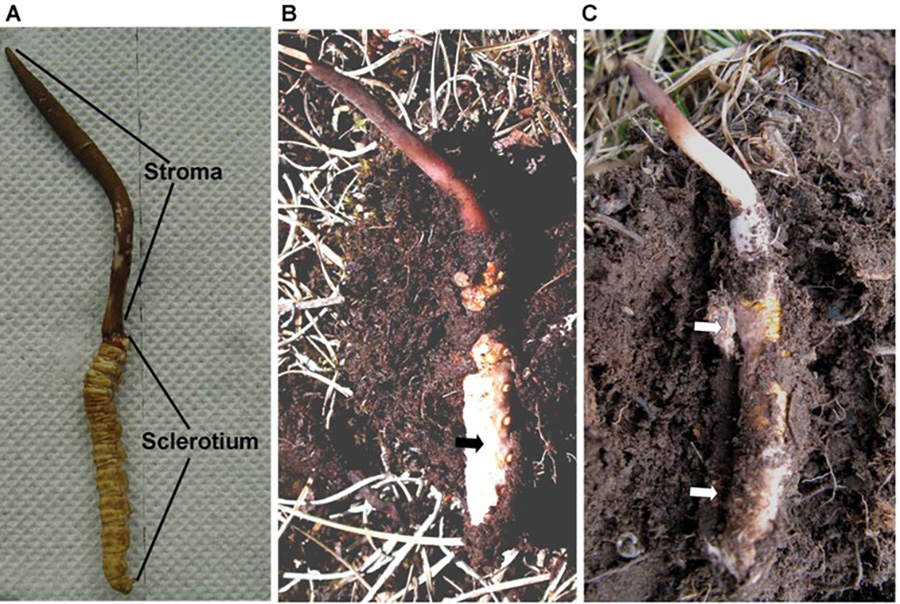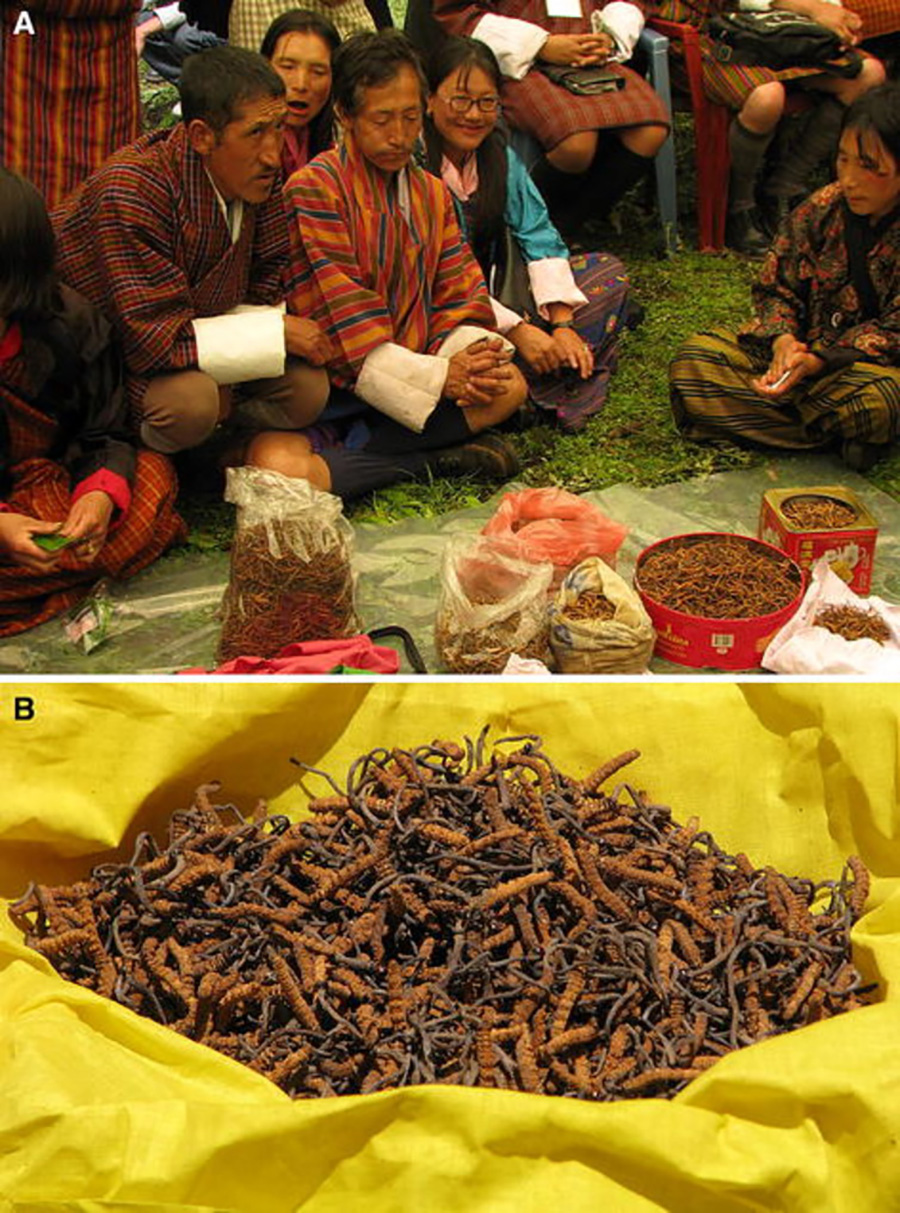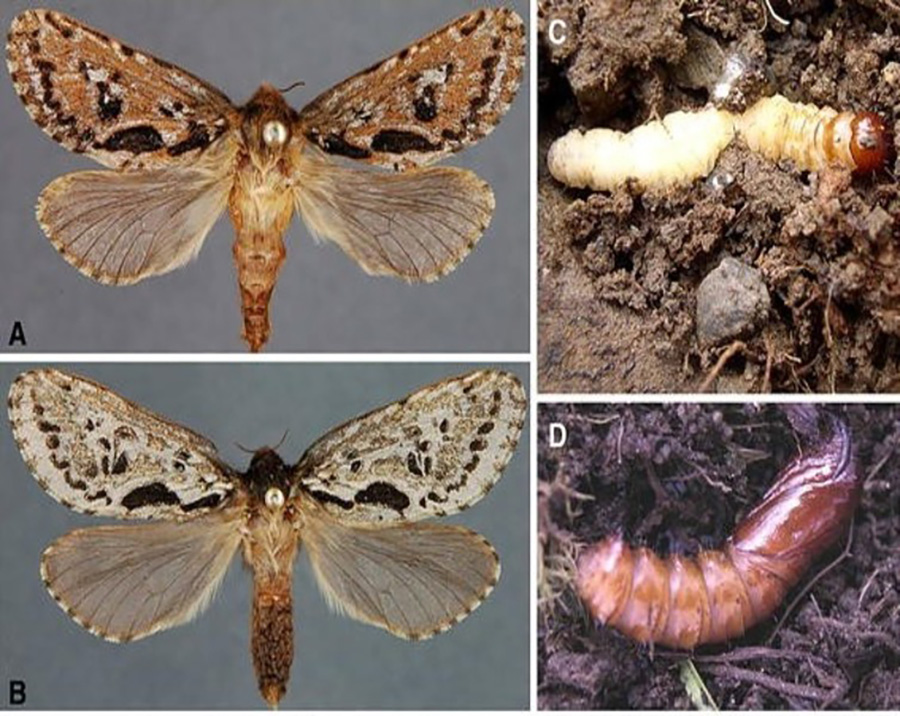At the beginning of the Himalayan summer, when the snows start to melt, all the schools close for the season and Nepali parents and children move to the grasslands with enough food for a month-long journey on a quest for a herb more valuable than gold.
To find yarsagumba, families crawl through muddy fields hoping to spot a yellowish-green mummified caterpillar that resembles a disproportionate unicorn, with a dark-colored elongated fungus growing out of a larva’s head.
In Chinese, the two-faced creature is called dong chong xia cao, which translates as “winter worm, summer grass.” During the winter, yarsagumba is worm-like, but by the summer, invaded by fungus, it looks more like a plant.
Mature yarsagumba resembles nothing so much as a matchstick, thin and slender, projecting two to three centimeters above the ground across the alpine meadows of the Himalayas.

Himalayan Viagra
To locals, the hunt is well worth it. Just one kilogram of yarsagumba can fetch up to US$100,000. In rural Nepal, where jobs are limited, the majority of families living at high altitudes, as well as those in neighboring regions, earn their living by collecting this herb, making it by far the most valuable commodity around.
Bu why is it so lucrative? The name is a hint: yarsagumba is also known as “Himalayan Viagra” due to the aphrodisiac medley of caterpillar and fungus.
It is believed that cattlemen first discovered the pharmacological benefits of the caterpillar-fungus more than a thousand years ago after noticing their yaks becoming energized from feeding on the herb.
Starting in the 1960s, people began making tea and soups out of this mythological little plant-animal, and stuffing the belly of a duck with yarsagumba herbs before roasting.
This magic fungus was widely popularized in the 1990s, when a Chinese runner who ate it broke two world records. Since then, research on the caterpillar-fungus has intensified.

The main chemical constituents of natural Cordyceps’s 28 saturated and unsaturated fatty acids are palmitic acid, linoleic acid, oleic acid, stearic acid, and ergo sterol. It also includes vitamins and inorganic elements.
Chinese medicine now asserts that that yarsagumba can cure impotence, increase libido, and resolve joint pains, as well as treat cancer and obesity.
Some of these claims have been substantiated. According to a 2016 paper in the journal Pharmacognosy Review, the authors found evidence “illustrating that O. sinensis can enhance libido and sexual performance, and can restore impaired reproductive functions, such as impotency or infertility, in both sexes.”
Fungus Through the Looking Glass
As Lewis Carroll writes in his book Through the Looking Glass, “It takes all the running you can do, to stay in the same place.” That seems the perfect metaphor for the yarsagumba, a living relationship in which a host and a parasite are involved in a continuous arms race.
Biologically speaking, this complex chimera consists of ghost moth larvae (the Thitarodes species in caterpillar stage) infected by the parasitic entomogenous ascomycete, Ophiocordyceps sinensis.
Ghost moths are relatively large moths known for their reduced adult mouth parts and distinctive subterranean larvae, which are root-feeders of grassland soil, meaning they can feed on any parts of a plant.
The caterpillars spend several years of their lives remaining dormant in winter, and emerge as adults after pupating in early summer. Then, alas, they die; the average adult lifespan of Thitarodes is two to five days.
Thitarodes are the only hosts to the O. sinensis parasite, and young caterpillars infected by the fungal spores perish before pupation, a wildly growing mycelium having consumed the body of the larva.
After two to four weeks, a slender, sprouting body emerges from behind the head of the larva. It is an eerie death, to be sure.
Scientists do not entirely understand this spectacular co-evolutionary process. Because the fungus is highly host-specific and it is very difficult to rear moths in laboratories, its infection pathway is still under investigation.

Humans: The Final Threat
In this biotrophic system in which the parasite must kill its host to survive, humans may be considered a third trophic level: we parasitize this parasitic complex.
As the medicinal value of yarsagumba is increasingly hyped, China’s massive consumer market is clamoring for the product, causing its price to rise and spurring a veritable gold rush to Nepal’s Himalayan belt.
But collecting these fungi before they mature prevents dispersal of their spores, and the availability of yarsagumba is declining yearly. From a 2009 peak to 2011, the trade fell by half per annum. Due to a lack of proper regulation, over-harvesting is increasingly common.
The fungi are also vulnerable to climate change. As global temperatures rise and snowfall in the Himalayas decreases, their natural habitat suffers, limiting the breeding period.
There is a darker side to the fungus fad, too. Every year, as families race to the hills for their annual yarsagumba quest, some fungus hunters—both adults and school children—lose their lives to turf wars and the precipitous, unforgiving mountains.
In June 2009, seven Nepalese men who had climbed up the mountains to pick yarsagumba were attacked with sticks and knives, and their bodies thrown into the deep ravines.
Local Buddhists, especially those of the older generation, believe that to pick yarsagumba is a sin, in keeping with the Buddha’s teaching that this seemingly natural treasure is actually a curse. China’s consumers don’t seem to mind.
Prayan Pokharel is a doctoral student at the Institute for Insect Biotechnology, University of Giessen. This article was originally published in The Conversation and is republished by kind agreement.

















